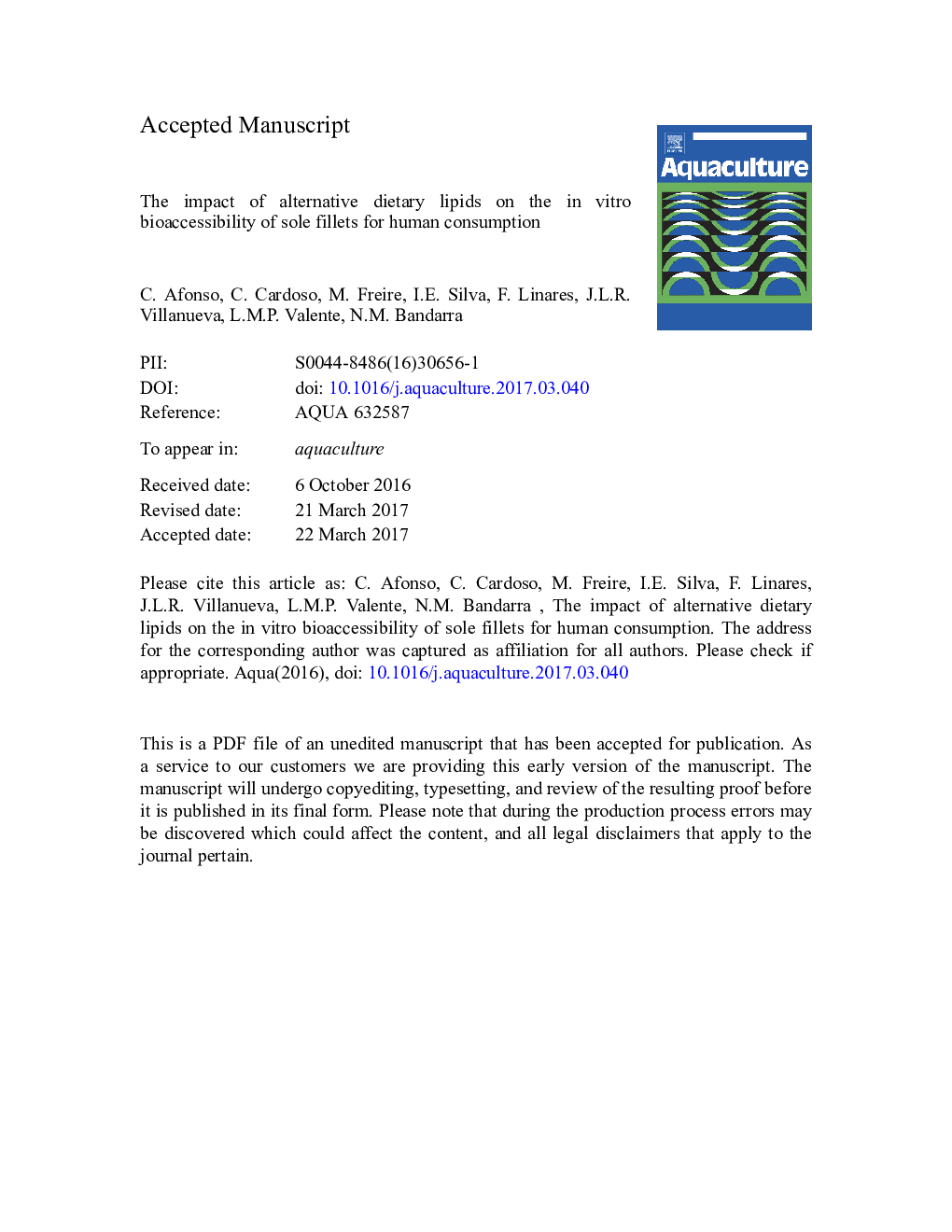| Article ID | Journal | Published Year | Pages | File Type |
|---|---|---|---|---|
| 5539385 | Aquaculture | 2017 | 38 Pages |
Abstract
The relative FA profile varied as a function of fish diet ingredients with a progressive decline of the Ï3/Ï6 ratio with growing replacement of fish oil by vegetable oil. Regarding FA bioaccessibility in human, differences between total Ï3 polyunsaturated fatty acids (Ï3 PUFA) (58-70%) and total Ï6 PUFA (34-55%) were statistically significant in CTL and D50 sole groups. But, for D100 sole, the bioaccessibility of Ï3 PUFA was not higher than that of Ï6 PUFA. The bioaccessibility of each Ï3-PUFA varied widely between 36 and 74%, depending on the particular FA and the diet fed to the farmed sole. Strong evidence supporting a predominantly regioselective action of lipase during in vitro digestion was observed and the FA hydrolysis of docosahexaenoic, myristic, and palmitic acids was found less complete, which correlates with their higher binding frequency at the 2-position (sn-2) of TAGs in fish. It was shown that full, but not partial, dietary replacement of fish oil by vegetable oil was detrimental not only to Ï3/Ï6 ratio in the Senegalese sole muscle, but also to the FA bioaccessibility (after digestion) of saturated fatty acids (including palmitic acid), oleic, eicosapentaenoic, and docosapentaenoic acids. But a partial (50%) replacement of fish oil by vegetable oils may ensure Senegalese sole fillet nutritional quality for human consumption.
Related Topics
Life Sciences
Agricultural and Biological Sciences
Aquatic Science
Authors
C. Afonso, C. Cardoso, M. Freire, I.E. Silva, F. Linares, J.L.R. Villanueva, L.M.P. Valente, N.M. Bandarra,
